Informational fundamentals of developments civilizational dynamics of contemporary societies in comparative-historical prospect
Abstract
The research on information mechanisms of civilizational processes is resulted in the article. Social associations as the information systems, developments of human civilizations formed during the history of humanity as the answer to operating influence of environment are considered. It is shown, how in contemporary societies the experience of information system interactions stored by humanity with conditions of environment is used. Features and problems of development of civilizations are considered.
Keywords: social system, civilizational dynamics, information, evolution.
Text
Search for the regularities of human evolution and evolution of social systems have special value for definition of the mechanisms governing social processes, that have wide scientific and practical application. However, despite all reasonable efforts, human sciences have no unified theory to explain civilizational dynamics of contemporary societies.
Research information fundamentals of the interaction between a human and the environment providing both individual and group adaptive behavioral models appear the most perspective in this direction. A range of various factors affecting living systems is quite wide.
It is necessary for person to be guided in a huge stream of the various information, which may be either new information, or information received in the past, this may be either realized (e.g. cultural), or not realized (e.g. genetic). It may either be stored on material carriers such as genes, tools, products of labor, etc. or not material basis: traditions, myths, or prejudices. Information may influence either spontaneously (e.g. market), or object-oriented (e.g. training). Diverse data may be not coordinated and contradictory, and suggest radically opposite solutions. For example, prejudices may be in conflict with objective data, instincts contradict common sense, and all these factors together may be contrary to some new circumstances that arise unexpectedly.
It is obvious that for a human to live under conditions of information variety, a mechanism of using information is required (some structure allowing both accumulation databases systematically and work with new information that comes for the first time). Changes in environmental conditions require “adjustment” of internal information structures both of a human and of social systems to the solution of new problems. Socially-psychological evolution providing adaptation both to stable and changing existence conditions is based on information processes of interaction with environment.
A number of works in human sciences is dedicated to research into a person and social groups within information society (1, 2, 3, 4, 5, 6, 7, 8), though a person as such and social groups as informational systems have not been properly investigated, therefore, informational mechanisms providing socially-psychological evolution have not been sufficiently investigated as well.
Theoretical basis for a work is represented by the following aspects:
- ideas about unity of a person, i.e. unity of its features, both genetic and acquired in the course of life (9, 10, 11, 12, 13, 14);
- evolutionary approach maintaining unity of mechanisms of evolution of all organisms of biosphere, including a human being (11, 12, 13);
- contemporary ideas about informational fundamentals of evolution, a human and social groups as informational systems able to receive, accumulate and use information (15, 16, 17, 18).
For methodology, a method of system analysis suggesting rules for investigation of complicated systems based on their properties (19, 20, 21, 22, 23), complemented with the following rules of informational interaction between the systems and environment that were not used before, is used.
1. A property of living systems to receive all diversity of coming information (both external and internal) via two channels:
- a channel “from the past” transferring information about stationary elements, with the data already available in the system;
- a channel “from the present” transferring information about non-stationary elements, with data absent in the system (24, 25).
2. A property of living systems to use two types of management:
- internal management exercised on the basis of inner senses – a controlling mechanism is present within the system;
- external management exercised on the basis of external environment requirements – a controlling mechanism is present outside the system (26).
1. Informational structure of a person
Various concepts of hierarchy of the systems and their classification were developed by M. Mesarovic. He suggested distinguishing different levels to describe hierarchy on the basis of approach to decision problems arising within the system (22, 29).
In the process of ontogenesis, as a result of interaction between the factors forming live organisms: genetic information and information coming out of external environment (9, 15, 16, 27, 28), a informational structure of a person with hierarchical structure is forming.
Informational structure of a person consists of a center - genotype and five levels of decision making (ways of reaction) – from the simplest instincts to complex processes of thinking that allow use of diverse approach to decision problem. Fig.1.
Let us analyze the forming levels of decision making as a possible response of a person (variants of decision making) to the coming information (stationary and non-stationary), with the using either of internal or external management. Alternatives of levels of decision making are given in comparison with E. Berne’s theory about the structure of a person containing different ego state: Adult, Parent, Child. The Child ego state develops into three discernable parts: the Natural Child, the Little Professor, and the Adapted Child (30) (Fig. 2).
1st level is instinctive. Response with internal management used is given to the coming internal information (genetic information that is always stationary) (A). These primitive instincts forming level [1] closest to the center, which use immerses a person into the Natural Child ego state.
2nd level is traditional. To response to the external stationary information coming from the environment (B) internal management is used, this is a genetic adaptability under standard conditions. With this level used, automatic customary actions, i.e. standard behavioral cliche [2] are forming. Ego state – Adapted Child.
3rd level is intuitive. To response to external non-stationary information (C) internal management is employed. With this level used, intuitive decisions in unusual situation are made [3]. Ego state – Little Professor.
4th level is rational. To response to external non-stationary information (C) external type of management is employed. This level is necessary for making rational decisions based on objective information and external circumstances [4]. Ego state – Adult.
5th level is axiological. The response with external type of management used is given to external stationary information (B). Such decisions are made based on cultural values, which allows for adaptation of the available behavioral schemes to the real situation or formulating new values [5]. Ego state – Parent.
The forming levels of decision making corresponds with N. Tinbergen’s ideas about progressive interaction between genetic information and environment in ontogenesis (10).
2. Databases of informational structure of a person
Let us consider which databases for information storage from “the past” are available to a person. Information databases are subdivided into genetic, cultural andoperative ones.
Genetic database contains information accumulated by all organisms preceding to an individual. With this luggage of the information a person is born. It is possible to say that a person is born with his personal database containing the most important rules of existence that allowed all preceding organisms to survive. This information “from the past” is used at the 1st - instinctive level (Natural Child).
Cultural database contains best behavioral experience of generations living under these specific environmental conditions and not fixed genetically. Cultural “past” can be divided into non-judgmental information about standard behavioral cliche (used at the 2nd – traditional level – Adapted Child), and information about cultural values (used by the 5th – axiological level – Parent) transferring through bringing up.
Operative database contains information about non-stationary repeatable elements, which have been fixed neither genetically nor culturally. This base is forming via training (contains 4th – rational level – Adult).
In Table 1, comparison of the given informational structure of a person (levels of decision making) with classic philosophic, psychological, and sociological ideas scientists have about the structure of a person, is presented (31, 32, 33, 34).
It is followed from Table 1 that ideas of various scientists somehow coincide with informational structure of a person, though most of all these ideas resemble concepts of E. Berne’s theory.
Special difficulty is represented, apparently, by 3rd level. E. Berne was the only person to find this level, his theory is based on empiric investigations and can serve as an empiric evidence of the resulting informational structure of a person, since they not only have no contradictions but also even confirm and complement one another.
E. Berne noted that when trying to act from two ego states simultaneously, a person could not coordinate his actions. The resulting informational structure of a person approves this statement. Actually, it is impossible to use two and more informational levels simultaneously, for in this case a person shall be governed by either different information, or use a different type of management. To pass from using of one level to another one, it is necessary to change either a type of management or informational channel, or both.
Aggregate of informational levels and databases represents the informational potential (potential information possibilities) of a person.
The informational structure of a person is formed to be able to provide desired behavior of a person under various environmental conditions, employing different information levels and using one or another way of reacting.
3. Informational fundamentals of forming collective adaptive behavioral models
People uniting into a social system contribute their knowledge, experience, culture, etc., that is their informational potential to this system. As a result, an informational structure social system similar to the personinformational system is forming. It also consists of five levels of decision making. Each level contains databases and informational possibilities of the corresponding levels of all people composing the social system, which forms a corresponding group of people, a so called socially-psychological group. For example, the 4th - rational level of the social system contains knowledge and rational ways of decision making of all people composing the social system, this level comprises a socially-psychological group called a Social Adult, and the 5th - axiological level contains all their values and composes a socially-psychological group called a Social Parent, etc. Names of the socially-psychological groups, for vivid perception, are given with E. Berne’s terminology used, however, it should be mentioned that E. Berne did not distinguish such groups, and he is not responsible for the further construction.
Graphically the model of the informational structure social system repeats informational structure of a person, however, its center is represented by the aggregate genetic information of the social system, viz. gene pool, surrounded by the levels similar to those of the person, which forms the information structure of the latter, or informational potential of the social system. Fig. 3.
The social system like an individual cannot make decisions simultaneously with the using of all available information potential. Environmental conditions make people use a block of personal information and a level of decision making designated just for these conditions. That is why actually the social system has two levels of decision-making activated:
- the first one is necessary for the managing subsystem, which makes general decisions;
- the second one is necessary for the managed subsystem, which realizes the decisions.
The subsystems contain socially-psychological groups corresponding with these levels that formed informational structure social system.
An informational level to be used in making decisions general for the system is determined by the informational type of a social system dependent on the state of the factors, forming the system: the internal informational potential and a complex of conditions of existence of the system. The informational type social system provides collective adaptive behavioral models designated for particular environmental conditions.
However, it should be noted that “a specifically system investigation consists in the investigation of the objects just in the aspect in which they represent systems as such” (35). That is why informational type social system points at the emergent features of the system only. In any other aspects, people can choose other informational levels of decision making.
4. Informational fundamentals of adaptation and management of social systems in the ancient societies
A human is a part of the biosphere, and, therefore, he is exposed to the influence of evolutionary forces not only at the individual level, but also at the group one. Failure in the struggle for existence was likely to expect both individuals and groups that were not able to master one or another way of behavior. So, socially-psychological evolution cannot be separated from organic evolution, and is an integral part of the latter.
History of the modern civilization is quite short, this accounts for just several tens or hundreds years. Meanwhile, the history of humanity and human groups amounts not to tens, or even thousands, but to millions of years, compared to which modern civilization has been existing for a negligible period. Moreover, now, when speaking about modern civilization, we mean by no means all humanity.
For millions of years, people have existed under rather diverse environmental conditions. All history of humanity is a history of adaptation to the stationary elements of the environment and struggle with non-stationary ones, regulation of harmonic interactions and search for compromises between the decisions already tested by the prior generates, and new ones, that provides civilizational dynamics.
Under the conditions of insignificant changes, from generation to generation the informational social system receives similar information about external environment. In this case, a decision is made on the basis of our ancestors’ experience. Under these conditions, informational type - the Stationary system is forming, that is making use of “ancestors’ wisdom” i.e. of the information received by means of cultural inheritance from all preceding generations living under these circumstances, and stored in the traditional database (the 2nd traditional level of decision making). The managed subsystem is represented by a socially-psychological group named a Social Adapted Child. In the managing subsystem real people living at present are absent; this part is played by the preceding generations, which is frequently expressed in a cult of ancestors (Fig.4).
The transferring mechanism on the channel «from the past» are people of advanced age (elder) and also material data carriers non-genetic nature, viz. tools of labor, pictures, records, products of labor etc.
If the environmental conditions are dynamic (or have become dynamic because of floods, earthquakes, enemies’ attacks, etc.) the social system cannot take advantage of the ancestors’ instructions. If there is a lack of information in cultural and operative “past” on which basis it is possible to make rational decisions, instincts and intuition come. In such informational systems a leader is indispensable (M. Weber would call the latter a charismatic leader (34)), able to use an intuitive level of decision making and “charge” people emotionally. Thus, in the case of high environmental dynamism, informational type - the Intuitive system is forming (Fig. 5 B). Because this system lacks knowledge to rationally apprehend and use non-stationary elements for the environment to be made stationary, the system’s action are directed towards eliminating of these elements.
If dynamism is extremely high, very close group up to the forming of the «the madding crowd» may emerge (by Gustave Le Bon) (36). In this case, emergent (system) properties are utmost, and goals of the system are more important than goals, or even physical survival of individual elements, and sometimes, of the whole system. However, for the «madding crowd» unable to think so as to start acting, a person is required who has not lost this ability, and could become a leader who could intuitively formulate the object and express an emotionally powerful uniting idea, or at least, show the direction by his own example. More likely, the forming of the «madding crowd» is of genetic nature, as the people’s ability to unite affected by strong emotions caused by some sharp changes of the external environment, and not thinking about their own life, to fight courageously have been saving human groups for millions of years.
5. Informational transformations in the period of the Neolithic revolution
In the early period of the development of social groups, when the factors of wild nature were the major external managing affects, informational potential of social systems was restricted by three levels of decision making using internal management.
Competition between social groups in this period consisted in survival of the groups that could master best of all two informational types – the Stationary and Intuitive ones, and transfer the received information about methods of survival to the next generations. Under stationary conditions, the Stationary system was forming, while under the conditions of increased dynamism, the social system transformed into the Intuitive system. If dynamism was defeated, the external environment stabilized, and the group returned to the Stationary type. Fig.5. Further development of informational systems was possible only if new essential changes of the system forming factors were observed.
Successful adaptation to the environmental conditions of the ancient hunters and gatherers caused an increase in population and first overpopulation of the Earth. One such group (20-60 persons) needed area of several hundreds of square kilometers, so it was impossible to defend this area. The way out of the overpopulation crisis was found in passing from an extensive method of business practice to an intensive one (the Neolithic revolution) (37, 38), which resulted in reducing amount of the land necessary for survival, and released, for some time, intense competition. However, release of competition promoted preservation of the previous informational types of social systems at this evolutionary stage. However, in this period, knowledge was actively accumulated, and the methods of decision making were developed, with external management in business activity used, which afterward allowed expanding its application.
6. Information mechanisms of passing of social systems to dynamic evolution
The second overpopulation of the Earth increased competition significantly. And, since the area required for survival reduced a lot, a physical possibility to defend and conquer land appeared. Under these circumstances, competition for the limited resources (land), which availability was a key factor for people survival, spread in full force and effect, and this is marked in history with numerous wars for the expanding of lands. That was the reason for the social systems to transform into the Intuitive system at the initial stages of struggle.
However, afterward, escalation of military actions ushered a new era in the evolution of informational social systems, since in the environment as in the system forming factor radical changes occurred, which required a search for new adaptive mechanisms and rise to a new level of social interactions, since the significance of spontaneous factors decreased in favor of the anthropogenic one.
Forces of the wild nature are quite diverse, which does not allow making certain coordinated decisions. Meanwhile, an anthropogenic factor has more stationary fragments, e.g. there is always a threat of attack or a need of gains of new lands, but non-judgmental standard behavioral cliche under these circumstances are of little use. As a response to the permanently acting (or repeated) environmental elements, it is quite possible to develop general universal schemes of decision making that can be used if these elements arise repeatedly (if enemy attacks repeatedly). These schemes represent cultural patriotic values, and their use is possible only by means of the external management that allow individuals to orient under certain external circumstances and make decisions as a response to the stationary fragments of the dynamic environment.
New informational approaches revealed a possibility of passing to a new type of management for information systems – external management, significantly extending informational potential of social systems. Transformation resulted in the forming of new informational type - the Axiological system using the 5th level of decision making for the struggle for limited resources. Fig.6. A transferring mechanism is represented by cultivation of patriotic values with new generations.
Successful adaptation of axiological systems has led to the development of trade, and, correspondingly, to the change of a system forming factor, i.e. environment. Interaction with a flow of the new non-stationary “market” elements required formulating new objectives and search for new adaptive mechanisms to work with objective information. The necessity of using a rational level of decision making as a response to the new non-stationary elements has arisen, which led to the forming of a new informational type – the Rational system. Fig.7.
Fig. 8 shows a general plan of historic development of informational social systems. Environmental conditions causing the transformations are specified.
In Table 2, the typology and environmental conditions where one or another type is forming, as well as their goals, structure and specific features are given.
7. Compatible informational social systems
Combining informational social systems of various types results in the forming and existence of the informational Compatible system. In which case, one of the types should be a leading one, making decisions general for the whole group, which allows for the general goals achievement. Fig.9. If two or more informational types try to make any general decision simultaneously, the same problems arise as if a person tried to act out of several ego states.
Different informational type as a part of the Compatible system may act within general goals, with their own sub-goals specified (which allows for their defining as subsystems (23)), interacting with those elements of the environment a leading informational system cannot make decisions in response. However, these systems also may be neutral relatively to the leading information system, or specify goals contrary to the general goals, which may cause interaction conflicts.
It should be noted that a general plan of historic development of social informational systems given above is simplified. In fact, all types formed long ago, at the dawn of human society. Various information types forming in the course of civilizational dynamics have not disappeared; they are still co-existing changing only quantitatively in accordance with the requirements imposed by the environmental conditions and informational possibilities of social systems.
8. Informational crises within social systems and a mechanism of transformations
Changing the environment as a system forming factor leads to the necessity of adaptation to the changed environmental conditions. A search for and formulating new goals relative to the new problems, as well as a search for the informational possibilities to achieve these goals, the controlling mechanisms providing achievement of these goals start acting (new leaders proposing new ideas appear social groups advocating the new development direction are forming), etc. Provided that an attempt to create a new structure corresponding to the new conditions has been successful, the social system is transforming into a system of a new type, which determines a trend of further interaction of the social system with environment, and quality of this interaction.
Informational types of social systems, as well as person’s levels of decision making are forming to accomplish a certain range of tasks; they cannot make decisions if the new problems go beyond the possibilities of this type.
However, if in accordance with E. Berne’s theory, a person may merely transfer executive power to another ego state currently required (certainly, provided, that he is able to do this) the social system has to reconstruct its informational structure, which is sometimes very difficult. So, if “not those” problems arise, in the social system social tension emerges because the existing informational structure cannot solve these problems, and management crisis comes.
Management crisis in the Stationary system arises whenever environment is not stationary any longer.
Management crisis in the Intuitive system arises when it is necessary to make decision in response to the stationary elements of the environment, to use cultural values, traditions, or rational reckoning.
Management crisis in the Axiological system comes if it is necessary to make decisions in response to the stationary or non-stationary elements of the environment contradicting this system values, excessively dynamic elements (which do not fit well into the scale of values) or requiring rational reckoning.
Management crisis of the Rational system may arise due to the necessity to react to the stationary elements of the environment, such as traditions and cultural values, religious views, etc. which evade rational comprehension. Besides, management crisis of the Rational system comes due to any sudden unpredictable changes, e.g. disasters, weather cataclysms, military actions, etc. (i.e. in the excessively dynamic environment), since the Rational system cannot make decisions in relation to non-stationary elements evading rational expectations.
In the Compatible system management crisis occurs if the environment suffers essential changes requiring replacement of a leading system type, if such replacement is difficult.
If the environmental conditions support no type, it is reserved in the group as a potential or weakly expressed (maybe, pursued by a leading informational system) but with certain corresponding environmental conditions emerging, this type manifests itself, or even occupies a leading position.
Transformation of informational systems occurs not owing to the historic laws or the prospected internal program of development, but due to the changes of the external environment, which in different periods are favorable to an informational system of one or another type. External conditions being stable, a social group has no reason to make any changes; therefore evolution of social systems in different groups is extremely non-uniform. However, environmental changes are only a “push”, or, in other words, just a condition for possible future changes. Further scenario, viz. transformation into one or another type or the destruction of a system depends on informational potential of a social system and possibilities for its using. That is why mechanisms of civilizational dynamics consist in the interaction of the system forming factors – internal information and information of the external environment.
9. Variety of modern information systems
Contemporary conditions represent a wide range of various environmental factors, allowing diverse methods of using informational potential to manifest themselves, and resulting in the presence of various types of informational systems not only at the level of large public unities such as ethnos or states, but also within a modern society.
Acting as systems, all real groups, both permanent and temporary, have one or another informational type. Since every person participates in numerous social groups playing a corresponding part in each one, a contemporary society seems to be a quite complex informational system. In various social systems, a person can use various parts of his informational potential (different levels of decision making).
Different bureaucratic organizations, such as state structures are supposed to be represented by the Stationary system due to their high stability, many youth organizations or temporary groups (participants of rock-concerts, or football fan clubs) act as the Intuitive system, and oil and gas-extracting companies are represented by the Axiological one, etc. For business enterprises, intensiveness of competition is a key factor of dynamism, which determines the information type.
However, a large organization is expected to have the Compatible system, with functional subdivisions and informal groups characterized by different informational types. For example, administrative staff can be represented by the Rational system, a trade union – by the Axiological one, engineering department – by the Intuitive system, and an accounting department – by the Stationary one.
E. Berne did not distinguish “the best” and “the worst” ego states. The resulting model does not suppose existence of “the best” or “the worst” informational system type. For example, an Intuitive type may be typical both of an advertising agency under rather strict competitive conditions, and a scientific laboratory developing new ideas, and an organized criminal group, which struggles with police, society and other groups determines high dynamism of its ambient environment. One or another type of a social system speaks only for the part of informational potential being used by a social system, but no estimating criteria can be applied. We can deal only with the compliance of the informational type of a social system with the currently existing environmental conditions.
Conclusion
The basis of civilizational dynamics is the informational structure of a person having five information levels of decision making which provide the ability to use one or another part of people’s informational potential in accordance with the environmental conditions (channels for receiving information and methods of management). Psychologically this is expressed as using one or another ego state (according to E. Berne).
The resulting information structure of a person demonstrates that a problem of environmental and genetic determinant of human behavior widely discussed in the academic world has no sense, since, for example, in the forming of the first level primarily genes participate, while in the forming of the fifth one the social surrounding plays the key role, however, only an individual may choose the level of decision making. Besides, in some cases, the latter will choose the first level, while in another case he may choose the fifth or any other level.
Methods of interaction between social systems and socially-psychological groups with the environment were developing in the course of historic development of human groups as information adaptive mechanisms necessary for survival under diverse conditions of existence. In the course of the civilizational dynamics, if environmental conditions required, information potential increased, this extended adaptive information and psychological possibilities of social systems.
Forming one or another type of information social systems and their structures allow a social group to mobilize information possibilities and concentrate together on solving principal problems of interaction with environmental conditions, without blending incompatible solutions.
The results of the investigation verify unity of the processes of human evolution and evolution of the Earth biosphere, since the resulting model clearly demonstrates the action of stabilizing, separating and guiding forces, well known in the evolution theory. The given model reflects the information aspect of the evolution process.
References
1. Bell, D. Notes on the Post-Industrial Society // The Public Interest (1967. № 7. p. 102).
2. Toffler, A. Future Shock (New York, 1971).
3. Porat, M., Rubin, M. The Information Economy: Development and Measurement (Washington, DC, 1978).
4. Masuda, Y. The Information Society as Post-Industrial Society (Washington, DC, 1981).
5. Stonier,T. The Wealth of Information (London, 1983).
6. Katz, R.L. The Information Society: An International Perspective (New York, 1988).
7. Webster, F. Theories of the Information Society (London; New York: Routledge, 1998).
8. Wright, R. Three Scientists and Their Gods: Looking for Meaning in an Age of Information (HarperCollins, 1989).
9. Lewontin, R. C. The genetic basis of evolutionary change (New York: Columbia University Press, 1974).
10. Tinbergen, N. The study of instinct (Oxford: Oxford University Press, 1951).
11. Tugarinov, V.P. Priroda, civilizacija, chelovek (Leningrad: LGU, 1978).
12. Anan'ev, B.G. CHelovek kak predmet poznanija (Leningrad, 1987).
13. Anan'ev, B.G. Izbrannye psihologicheskie trudy. t. 1,2. (Moskva, 1980).
14. Serzhantov, V.F., Grechanyj, V.V. CHelovek kak predmet filosofskogo i estestvennonauchnogo poznanij (Leningrad, 1980).
15. Afanas'ev, V.G. Sistemnost' i obwestvo (Moskva, 1980).
16. Schmalhausen, I. I. Factors of Evolution: The Theory of Stabilizing Selection (Blakiston, Philadelphia, 1949).
17. Merkulov, I.P. JEvoljucionnaja jepistemologija: istorija i sovremennye podhody (Moskva, 1996).
18. Luhmann, N. The Reality of the Mass Media (Stanford: Stanford University Press, 1995).
19. Bertalanffy, L.von General System Theory: Foundations, Development, Applications (New York: George Braziller, 1968).
20. Bertalanffy, L. von Organismic Psychology and Systems Theory (Worchester: Clark University Press, 1968).
21. Blauberg, I.V., Sadovskij, V.N., JUdin, JE.G. Sistemnyj podhod v sovremennoj nauke// Problemy metodologii sistemnogo issledovanija (Moskva, 1970).
22. Mesarovic, M., Macko, D., Takahara, Ya. Theory of Multi-level Hierarchical Systems (Academic Press, 1970).
23. Volkova, V.N., Denisov, A.A. Osnovy teorii sistem i sistemnogo analiza (Sankt-Peterburg, 2001).
24. Geodakjan, V.A. Rol' polov v peredache i preobrazovanii geneticheskoj informacii. V kn.: Problemy peredachi informacii, t.1, vyp.1. Moskva (1965).
25. Aleksahin I.V., Tkachenko A.V. Princip dvuhkanal'nogo upravlenija. V kn.: Sistemnye issledovanija. Moskva (1976).
26. Waterman T.H. System Theory and Biology – View of a Biologist // System Theory and Biology, New York (1968).
27. Grant, V. Organismic evolution (San Francisco, 1977).
28. Krushinskij, I.I. Povedenie zhivotnyh kak faktor processa mikrojevoljucii.V kn: Fiziologicheskaja genetika i genetika povedenija. Leningrad (1981).
29. Bogdanov A.A. Tektologija. Vseobwaja organizacionnaja nauka. kn.1,2 (Moskva, 1989).
30. Berne E. Principles of Group Treatment (New York: Oxford University Press, 1966).
31.Freud S. A general introduction to psychoanalysis (New York: Doubleday 1915-1917/1943).
32. Jung C.G.. The structure of the psyche. The collected works of C.G. Jung (Vol. 8) (Princeton, NJ: Princeton University Press, 1931/1969).
33. Aristotle, Nicomachean Ethics (H. Rackham, Ed. Harvard University Press, 1934).
34. Weber, M. The Nature of Social Action, Runciman, W.G. 'Weber: Selections in Translation' (Cambridge University Press, 1991).
35. Uemov A.I. Logicheskij analiz sistemnogo podhoda k ob’ektam i ego mesto sredi drugih metodov issledovanija// Sistemnye issledovanija. Moskva (1969).
36. Le Bon Gustave, The Psychology of Peoples: Perspectives in Social Inquiry (New York: Arno Press, 1974).
37. Kabo, V.R. Pervobytnaja dozemledel'cheskaja obshhina (Moskva, 1986).
38. Kravchenko, A. Sociologija (Ekaterinburg 1998).
Figure legends
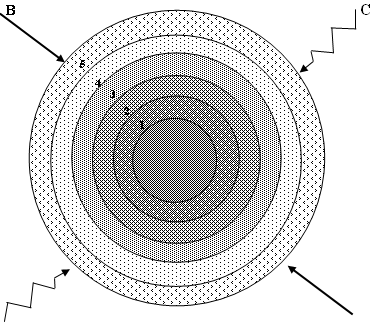
Fig. 1. Informational structure of a person. B – stationary elements of the environment; C – non-stationary elements of the environment; 1, 2, 3, 4, 5 – information levels of decision making.

Fig. 2. Forming the informational structure of а person. A – genetic information (always stationary); B – stationary elements of the environment; C – non-stationary elements of the environment, 1, 2, 3, 4, 5 – levels of decision making.
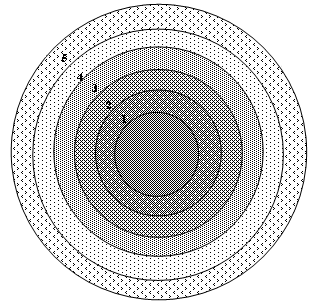
Fig. 3. General structure of the informational social system.
Levels of decision making/ subsystems of a social system: 1 - instinctive/ Social Natural Child, 2 – traditional/ Social Adapted Child, 3 – intuitive/ Social Little Professor, 4 – rational/ Social Adult, 5 – axiological/ Social Parent.
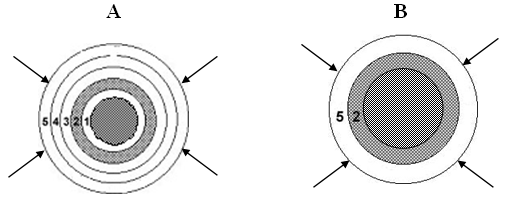
Fig. 4. Structure of the Stationary system.
A – general scheme social system containing all possible levels of decision making, out of which only the 2nd and the 5th are activated (act in fact).
B – simplified scheme where only activated levels of decision making are depicted.
2nd level of a social system combines the majority of members of the group and composes a Social Adapted Child. The 5th level of decision making contains no existing people (not hatched). It combines wisdom of all generations before us, but has no living persons. Arrows point at the influence of stationary elements of the environment.
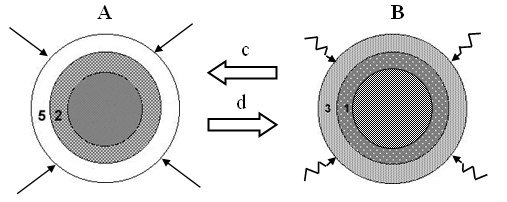
Fig. 5. Structure of informational systems of the ancient societies.
A – Stationary system,
2 – Social Adapted Child,
5 – Preceding generations living under these circumstances.
B – Intuitive system,
1 – Social Natural Child,
3 – Social Little Professor.
Arrows “c” and “d” point at the possibility of passing from one alternative to another, depending on the environmental conditions. Dynamic conditions (broken arrows) tend to the alternative B, and stationary (direct arrows) – to the alternative A.
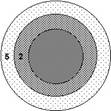
Fig. 6. Structure of the Axiological system
2 – Social Adapted Child, 5 – Social Parent.

Fig. 7. Structure of the Rational system
2 – Social Adapted Child, 5 – Social Parent.
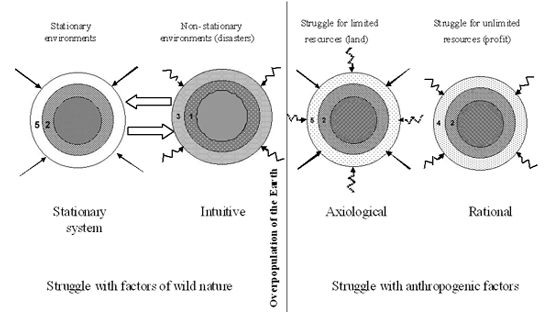
Fig. 8. Historic development of social information systems
Broken arrows point at the dynamic environmental conditions, while direct arrows point at the stationary ones.
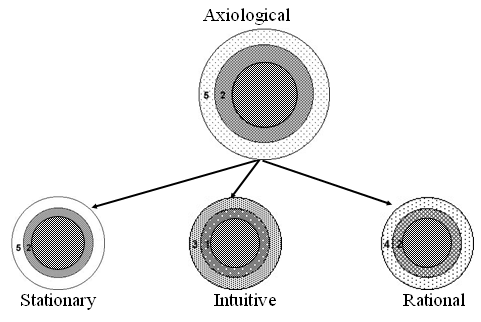
Fig. 9. Structure of the Compatible social system with a leading Axiological system
Tables
Table 1. Informational structure of a person as compared with ideas of scientists about structure of personality

Table 2. Typology and features of informational social systems
| Type of management |
Internal management |
External management |
| Type of a system |
Stationary |
Intuitive |
Axiological |
Rational |
| Graphical presentation |
 |
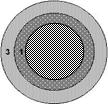 |
 |
 |
| Environmental conditions |
Stationary |
Highly dynamic |
Dynamic, with stationary fragments, to which the scale of values is applicable |
Dynamic, with a possibility to collect objective information |
| Goal |
Adaptation to stationary environmental conditions |
Transforming environment into a more stationary state |
Competitive struggle for limited resources |
Competitive struggle for unlimited resources |
| Leading management factor |
Traditions |
Emotions |
Values |
Objective information |
| Managing subsystem |
Previous generations |
Social Little Professor |
Social Parent |
Social Adult |
| Managed subsystem |
Social Adapted Child |
Social Natural Child |
Social Adapted Child |
Social Adapted Child |
| Method of optimization and stabilization of interactions with external environment |
Adaptation to stationary conditions by reproducing a pattern according to «ancestors' covenants» |
Eliminating non-stationary elements |
Enlargement of a system if external competition strengthens, splitting of the system if completion reduces |
Rational use of non-stationary elements |

|

